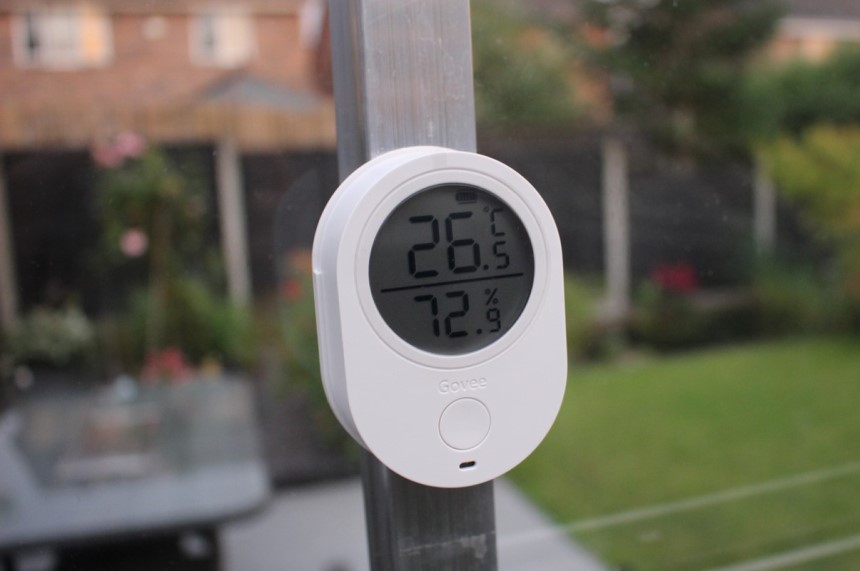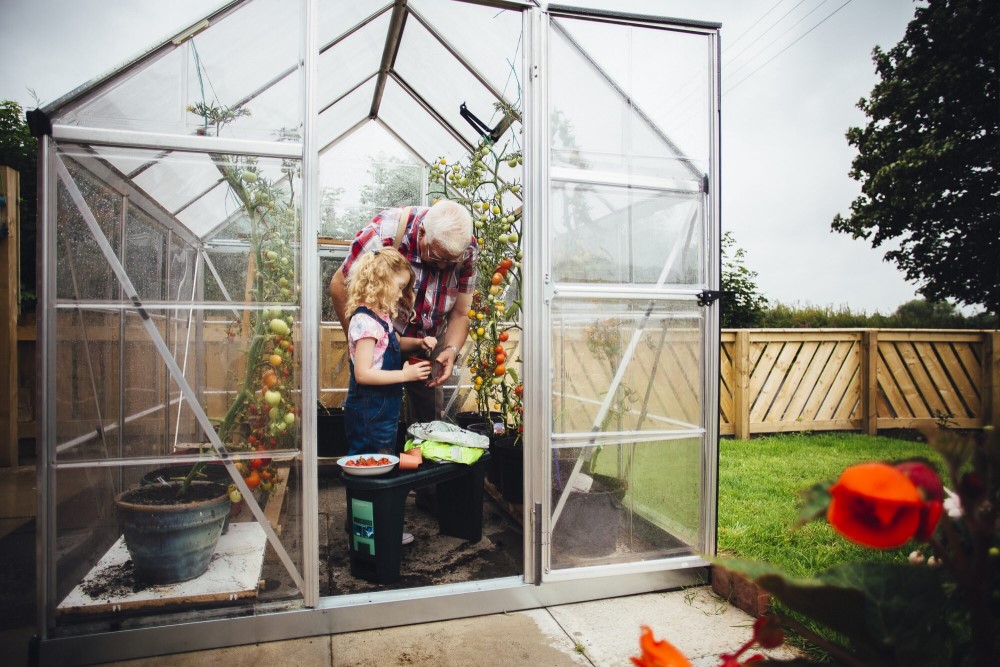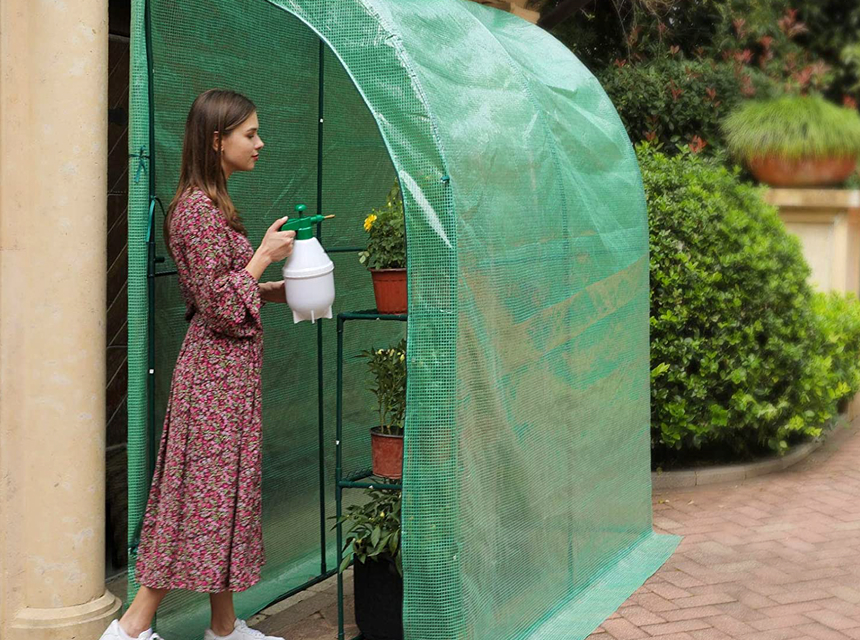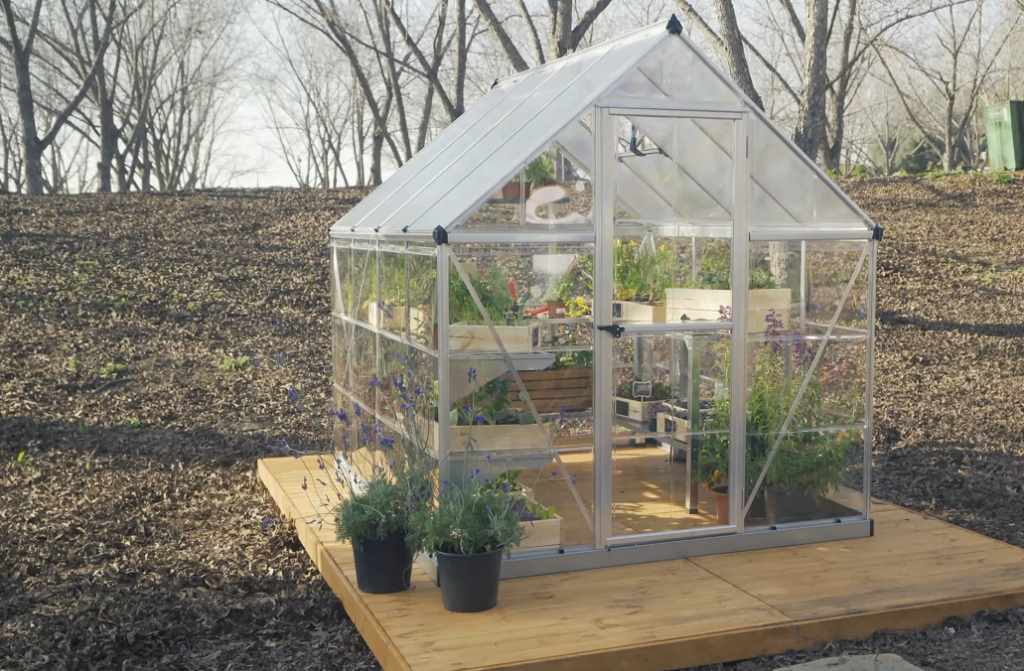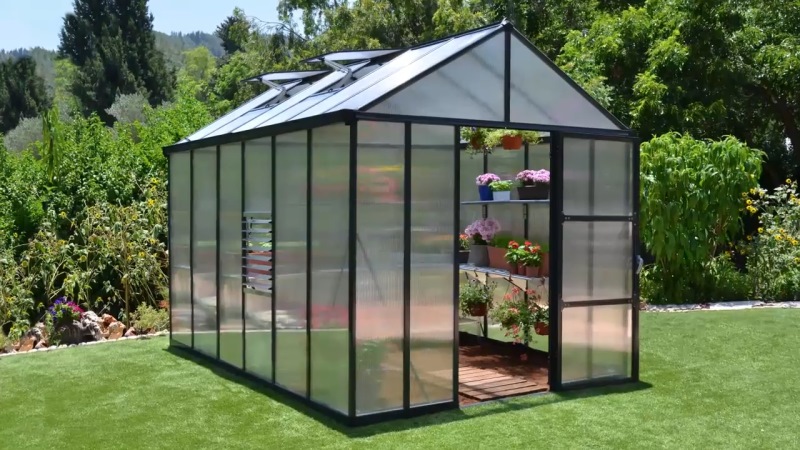
Raised bed gardening is essentially a form of gardening that allows the garden to be built above the natural soil level in an enclosed containment unit. You can use both naturally occurring soil or buy soil that contains specific nutrients that are necessary or beneficial for your choice of crop.
The types of crops you can grow in a raised bed greenhouse are almost endless, from flowers and vegetables to small shrubs and bushes. Trees and other deep-rooted plants and crops cannot grow in raised beds.
You have the option of constructing raised beds in the field or inside of a greenhouse or high tunnel, depending on your needs. In this article, we will discuss raised bed greenhouses, all the advantages, and the dos and don’ts.
Without further ado, let’s get right to it so you can get started with your own raised garden bed.
Raised bed greenhouses combine the compact nature of a raised bed with the ability to control external variables like temperature like you would find in a greenhouse. This enables you to control the conditions at much more affordable rates and in an easier manner than you would be able to in a greenhouse.
This is made possible by constructing a structure that consists of a translucent fabric cover that surrounds and is attached to your raised bed. Affordable, durable options can be found here and here, or you can peruse through the best greenhouse kits available in the market!
A fun example of a portable greenhouse is this eco-greenhouse Trusted Source www.bbc.com in a bottle!
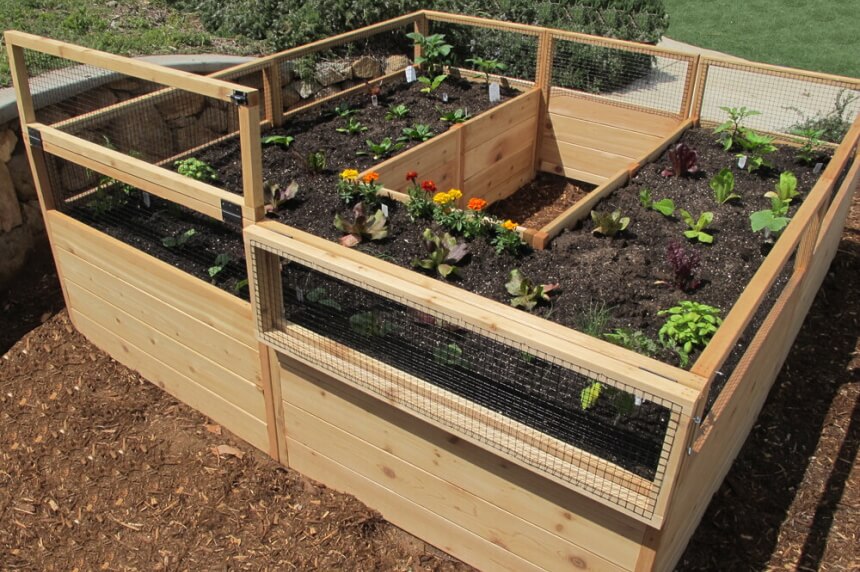
Raised beds offer the unique advantage of critter and pest-free soil that reduces the amount of attention that is needed to be provided to maintain the upkeep of your seedlings.
Due to the fabric cover, the temperature can be maintained within the confines of the structure and can provide seedlings enough warmth to thrive even in chilly spring months. To increase temperature control, take a look at these plasma grow lights that can significantly improve the quality of your crop!
Another factor that reduces the time needed to be invested is that in raised beds, the soil does not need to be de-weeded as much.
Raised beds allow for the soil to be of higher quality if needed and can allow you to make sure it is loose and aerated. Additionally, you can prevent frozen ground while planting and ensure your seedlings don’t die out.
Once set up, this can be one of the most affordable methods to grow your seedlings safely. This method uses little to no energy, or water as this article Trusted Source How to make a wicking bed: a veggie patch watering solution for hot Australian summers | Australian lifestyle | The Guardian You’ll need a hefty list of materials, but it’s worth it to keep veggie gardens happy and watered for up to 10 days – even in the heat www.theguardian.com in the Guardian explains, and the structure is easy to construct.
As raised beds are portable, you can choose to construct this almost anywhere in your garden and can even choose to do so on roofs or other locations of your choice. A lack of space will never prove to affect your ability with this method!
Due to the ability to control the temperature, you can watch your plants bloom for longer and can allow you to have extra time to plant an additional crop if you wish to!
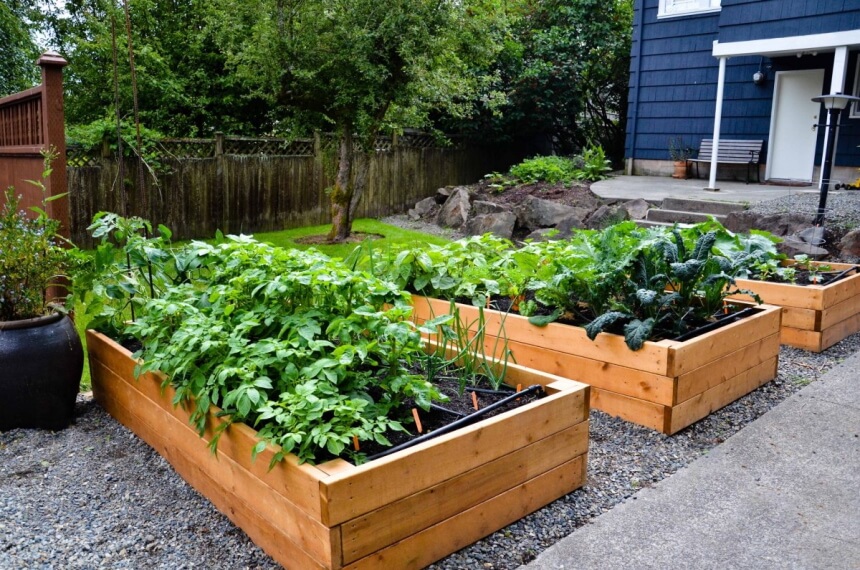
Generally, raised bed greenhouses are to be used to plant seedlings in the early spring season.
This can differ according to your location and the weather pattern that year, as well as the planting zone you live in. However, your raised bed greenhouse can protect your seedlings from frostbite and make sure they survive!
Below are the different types of crops you can plant.
As suggested by the name, cool weather crops can be planted and grown at the end of the winter season and the start of spring. Examples of these are hardy crops such as cabbage, cauliflower, and broccoli. These tough crops can grow safely at temperatures around 0 degrees Celsius, so you won’t have to worry!
At the start of spring, right when the temperature rises above freezing and the soil starts to thaw, you can begin planting warm weather crops in your raised bed greenhouse. Plants such as tomatoes, peas, peppers, and cucumbers favor slightly more agreeable temperatures, and this period of time can make sure your plants thrive and produce the best crop possible!
Plants that thrive and loose, aerated, and well-drained soil will benefit from growing in raised bed greenhouses. Examples of these types of plants are root vegetables like radishes, carrots, and leafy greens like kale and lettuce.
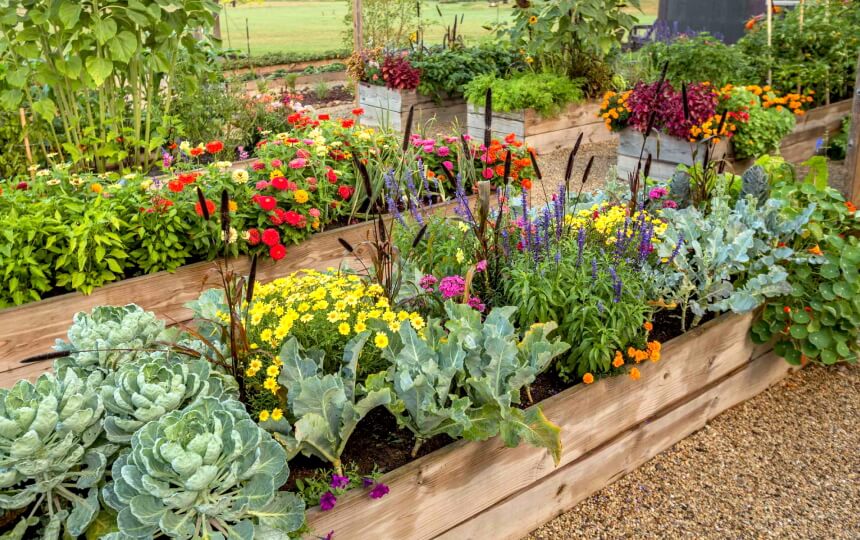
Though constructing a greenhouse means more control and less of a chance that your plants will not survive, choosing the correct location is essential to produce the best possible crop. Sunlight is necessary to warm the greenhouse during daylight houses as most of the energy is provided naturally through this.
Thus, choosing a spot that gets enough sunlight every day will allow the entrapment of heat that is so beneficial for your saplings.
If your raised bed greenhouse is shallow, picking a spot with no grass, rocks, or weeds under the bed can allow weeds to spread without any issue and increase plant growth.
Although it may be tempting to overcrowd your plants in an effort to gain the most crop within a limited season, resist the urge to do so. Every plant needs soil space to spread its roots and nutrients without having to share them with many other plants. This proves to be especially important within contained spaces such as a raised bed greenhouse, where there is a limited supply of soil and thus nutrients. Ensure each plant has sufficient space.
A trick is to try Companion Planting and choose plants that complement each other. Make sure to do your research before co-planting. An example of plants that go well together is beans and potatoes. Complementary plants benefit each other by helping repel insects, providing heat or wind protection. They can even help repel insects or pests.
First, decide on a size and location. Then prepare your site. Dig out a shallow bed to allow your roots to have space to spread. Place wire mesh over your hole to maintain a barrier between your raised bed and the natural soil and ensure your crops are protected from pests and weeds.
Then construct your frame. There are two types of frames which are detailed below. The most important thing to make sure of is that your raised bed frame is level. This ensures that water is distributed equally and doesn’t pool to one side so that some plants get less water and wither, and others rot and die.
Lastly, fill in your bed with soil. Choose a soil that is rich with nutrients, fill it up, and level the soil. Plant your favorite seeds and patiently wait for them to grow. Ample sunshine and water are needed, just like with normal planting. The same raised beds can be utilized again and again, provided the frames stay intact. Just add some more compost and plant new saplings again.
Below is a handy video explaining how to build raised bed in your greenhouse.
There is a lot of variation within raised bed greenhouses, but there are two main types of structure that you can choose from: hoop houses or cold frames. There are pros and cons to both, but both can help lengthen the season for gardening to nearly all year round.
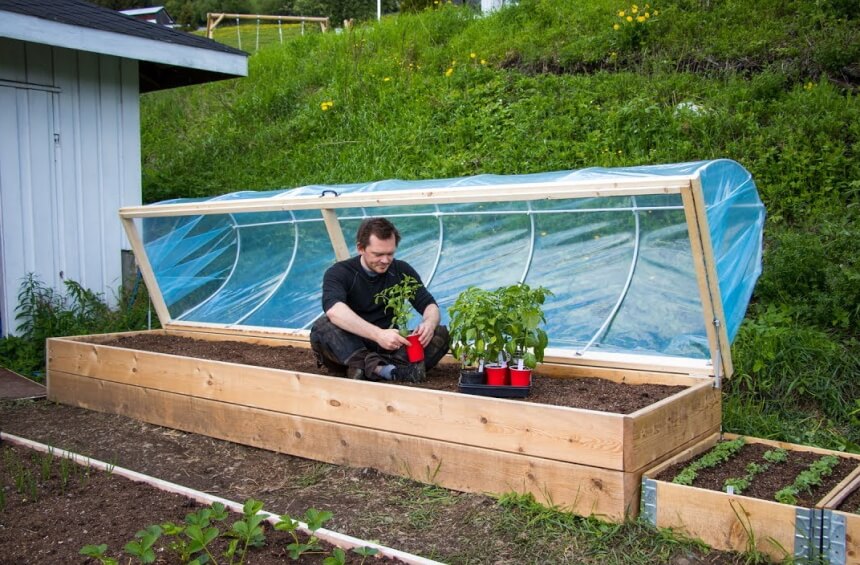
Since they are so easily constructed, they can be put up and taken down when necessary and can be put up only when it is required. Due to this, they don’t need any easy access openings or hinges.
The simplest way to assemble a hoop house is by using a PVC pipe, wire, or other easy and flexible material. Stick the ends of the pipe into the soil at the edges of your raised beds and then cover them with a flexible, thick, clear, and durable cover, generally made out of plastic. Hoops can be constructed out of wood and can be nailed inside the bed exterior to enable a more permanent solution!
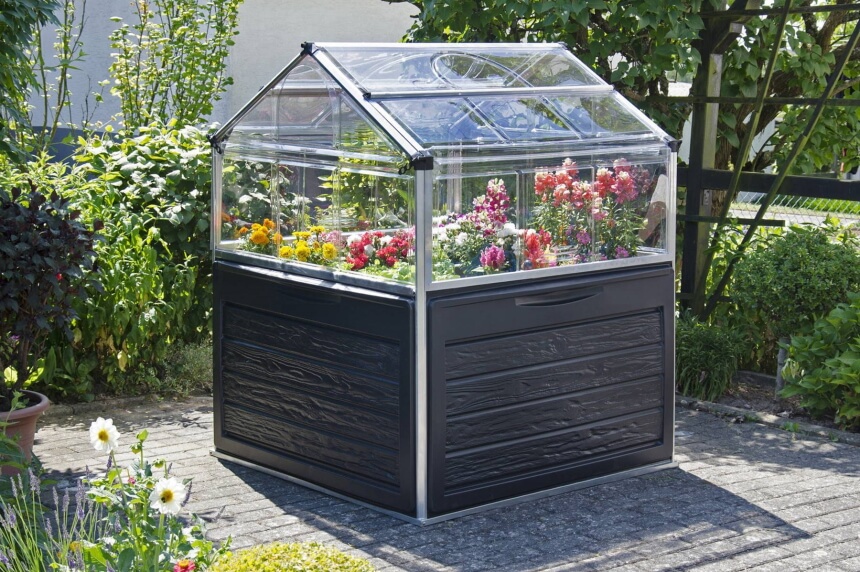
The frames are attached to your raised beds and can be hinged onto them in order for them to become a permanent part of your raised bed. It can be opened up when needed and when the weather does not require it to be used. They can be used year-round and are generally more aesthetically appealing than hoop houses.
Cold frames are usually constructed by having a wooden frame lined with glass or plastic of good quality.
If you have some spare material lying around or have renovated recently, you can use leftover windows and repurpose them to make a cold frame. They’re also easily available online.
It isn’t mandatory to have a raised garden bed. You can use a fixed shed greenhouse or use solar lights or other energy utilizing innovations to provide heat to your garden.
Here are some commonly asked questions and their answers when considering a raised bed greenhouse as an option for your needs:
Your raised bed should be at least 2 to 3 feet deep, especially if you can only access it from one end. This ensures that there is more gardening space, drainage is not compromised, and that it is easier to access plants than it would be if they were planted in the natural soil. This can depend on the size of the vegetables, flowers, or any other crops you may be planting.
A raised garden bed doesn’t necessarily have to be lined with plastic, but having a lining can help improve insulation, especially during harsh winter months. However, make sure to have deeper raised beds if you choose to try this, as this will prevent the roots from spreading too much.
Aerating the soil and making sure the water is draining effectively will prevent your raised bed crop roots from rotting. Too much water is just as bad as too little water, so proper drainage is essential in this process.
Raised bed greenhouses can prove effective, affordable, and energy-saving solutions that can be utilized anywhere. They make growing crops easier and require less energy and time to be invested while also producing a healthier and larger crop.
Their heat-saving ability also increases the growing season, which allows for multiple crops within the same year and can thus increase output. All of this exists within a small one-time cost of a frame and a raised bed, and so this option is definitely one of the best out there!
